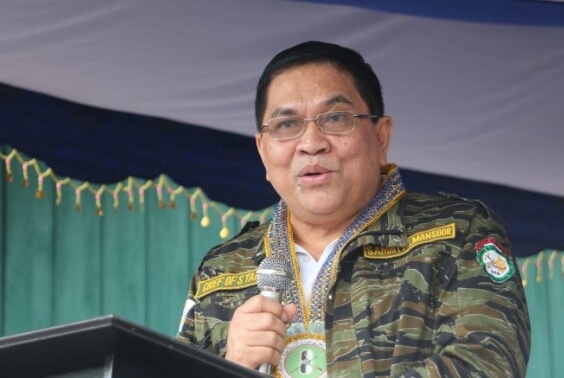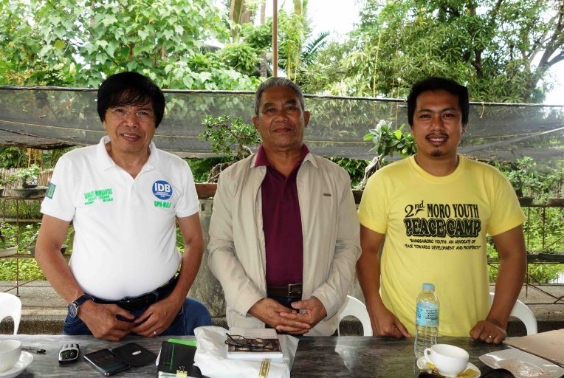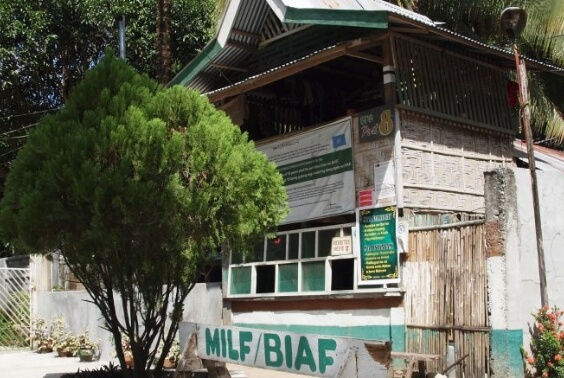- SOUTHERN PHILIPPINES
MILF and MNLF: The Direction of Two Peace Processes and the Role of the Organisation of Islamic Cooperation (OIC)
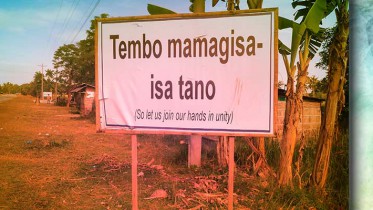
On December 8, 2013, the Philippine government and the Moro Islamic Liberation Front (MILF) signed a document on power sharing. The Framework Agreement the two parties signed on October 15, 2012 set the enactment of a “Bangsamoro basic law” to establish a new autonomous government as a precondition for agreement on four annexes on “transitional arrangements and modalities,” “wealth sharing,” “power sharing” and “normalization.” Since agreement has already been reached on two of the annexes and due to the signing of the document on power sharing, only one annex, on normalization, remains.
A conflict has developed in the southern Philippines over the past forty-plus years and many people have lost their lives. Therefore, no one could wish for the two parties’ peace process to fail. However, there are uncertain elements of the peace process between the Philippine government and the MILF. Of greatest concern is the behavior of the Moro National Liberation Front (MNLF). 1
The Demands of the MNLF-Misuari faction
Soldiers from the MNLF-Misuari faction clashed with government troops in city of Zamboanga and on Basilan Island in September 2013. The fighting produced over 200 fatalities and 120,000 internally displaced persons. There are several views on the cause of the fighting. 2 Regardless of whether or not this directly triggered the fighting, one of these views points out that the MNLF-Misuari faction was dissatisfied with the peace process between the Philippine government and the MILF.
Why is the MNLF-Misuari faction opposed to the peace process between the Philippine government and the MILF? The MNLF demands the implementation of the 1996 Final Peace Agreement signed on September 2, 1996 by the Philippine government and the MNLF. 3 The key parts of the agreement call for a first phase in which transitional administrative organs—the Southern Philippine Council for Peace and Development (SPCPD) and Consultative Assembly—will be established in fourteen provinces and nine cities that will also be designated a Special Zone for Peace and Development (SZOPAD) where concentrated reconstruction and development will take place; 4 followed by a second phase in which a referendum will be held in the region two years later and a new autonomous government established following an election held three years later. 5 After the Final Peace Agreement was concluded in September 1996, that same month Nur Misuari won an uncontested election for governor of the Autonomous Region in Muslim Mindanao (ARMM) 6 and assumed the chairmanship of the SPCPD.
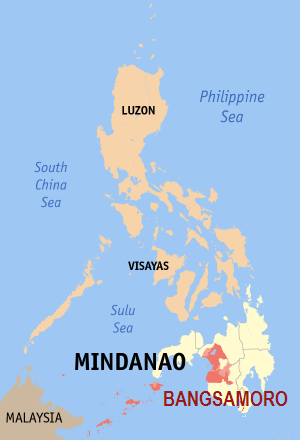
However, when the referendum’s scheduled date in October 1998 approached, the promises in the first phase were not implemented and both the government and the MNLF came to an understanding that they would not make preparations for the referendum. Thus the assembly decided to postpone the referendum. Eventually it was postponed twice, but the government held the referendum without the consent of the MNLF in August 2001. The result was that Basilan Province and Marawi City joined the ARMM as new members. The MNLF-Misuari wing does not accept this result. Meanwhile, in November of that year Misuari himself was detained under suspicion of fomenting an MNLF rebellion. 7
The Philippine government’s position is that the 1996 Final Peace Agreement has been implemented by the establishment of the ARMM through the 2001 referendum. 8 On the other hand, the MNLF argues that there is a problem with the implementation of the second phase. The two sides’ still have conflicting views and have not worked out their differences. Therefore, they and the OIC have been holding the Tripartite Meeting since 2007 to review the state of the 1996 Final Peace Agreement’s implementation.
Outcomes of the Two Peace Processes
That is to say, the MNLF sees the MILF as advancing a peace process of a different nature, notwithstanding that the Philippine government has not implemented the 1996 Final Peace Agreement with the MNLF. Incidentally, for the foreseeable future the minimum extent of the autonomous government the MILF aims to establish in 2016 will be an administrative district of five provinces and three cities with the addition of thirty-nine barangays in six municipalities of North Cotabato Province and six municipalities of Lanao del Norte Province. This differs greatly from the fourteen provinces and nine cities the 1996 Final Peace Agreement aimed to establish as an autonomous government. How can the two differing peace processes be united? Worryingly, the MILF is beginning to put out announcements criticizing the MNLF-Misuari wing because the wing’s position will hinder the peace process between the Philippine government and the MILF. 9
The quarrel between the two armed groups, who both aim to establish an autonomous government in the southern Philippines, means that they cannot build a stable peace. Under such circumstances it is the OIC that has the unique potential to connect the two groups. 10

The Role of the OIC Thus Far
The OIC, established in 1969, first officially commented on the problems in the southern Philippines in the “Resolution of the Islamic Conference of Foreign Ministers (ICFM) on the Question of the Bangsamoro Muslims in the Philippines” adopted at the OIC’s Third Islamic Conference of Foreign Ministers held in Jeddah, Saudi Arabia in 1972. In light of the intensifying conflict in the southern Philippines, the OIC called on the “good offices” of the Philippine government. Since then, a resolution on the problems of the Muslims in the southern Philippines has been adopted nearly every year at the OIC’s Conference of Foreign Ministers.
The Philippine government and the MNLF have signed peace agreements twice in the past, and the OIC played a vital role in both cases. The OIC commented on the MNLF for the first time through the aforementioned resolution in 1974, calling on the Philippine government and the MNLF to engage in negotiations. Thereafter, the OIC urged the MNLF to try and resolve the problems within the territory of a sovereign state rather than demand independence. As a result, in 1976, in the Libyan capital of Tripoli, the Philippine government and the MNLF signed the 1976 Tripoli Agreement that at the time stipulated the establishment of autonomy in thirteen provinces (now fourteen) and nine cities. In 1977, the following year, the OIC granted the MNLF observer status and later recognized the MILF as the “sole legitimate representative of the Bangsamoro people.”
Later, however, the Marcos administration of the Philippines, without the consent of the MNLF, issued Presidential Proclamation No. 1628 to create an autonomous region in March 1977 and established Regions IV and XII as autonomous regions in July 1979. 11 The MNLF opposed the proclamation and resumed its armed conflict with the government.
In response to this situation, in 1993 the OIC had Indonesia and Bangladesh join the Quadripartite Ministerial Commission to discuss the problems in the southern Philippines, where they were in effect left to the good offices of Indonesia. 12 The result was the conclusion of the 1996 Final Peace Agreement in Jakarta. The point is that both of the past two peace agreements between the Philippines and the MNLF resulted from the active involvement of the OIC.
I would like to point out that behind this expression of interest in the southern Philippines’ problems by the OIC was the personal interest of Libya’s Muammar Gaddafi. Libya supported insurgent forces of Muslim minorities around the world, and in the 1970s the country gave the MNLF financial and military assistance at the least. The MNLF set up an office in Tripoli until rebel activity flared up in Libya in 2011.
Expectations on the OIC
These developments show the MNLF has great trust in the OIC. It would not go too far to say that the OIC is an organization with a uniquely influential voice over the MNLF. While the MILF enhances its legitimacy as the representative of Filipino Muslims in place of the MNLF, the MNLF asserts its legitimacy by having gained observer status from the OIC as the “sole legitimate representative of the Bangsamoro people.” On the other hand, the MILF is making requests to the OIC such as granting it observer status and not recognizing the MNLF as the sole representative. However, it is still only the MNLF that has been granted OIC observer status.
From December 9, 2013—the day after the Philippine government and the MILF agreed on an annex on power sharing in Malaysia—to the 11th, the OIC convened the Fortieth Islamic Conference of Foreign Ministers in Conakry, the capital of the Republic of Guinea. At first there was news reporting that Misuari, who had gone missing after armed clashes in Zamboanga City and Basilan Island, might attend the conference, even though a warrant for his arrest had been issued. 13 In the end Misuari did not join, but the conference concluded by adopting the thirteen-point “Resolution No. 2/40-MM on the Question of Muslims in Southern Philippines.” The resolution insisted on such action as: full implementation of the 1996 Final Peace Agreement; coordination between the MNLF and MILF for peace and development for the Bangsamoro people; and integration of the gains of the 1976 Tripoli Agreement and 1996 Final Peace Agreement into a framework agreement and annexes.
No concrete steps have yet been taken on how to integrate the two peace processes with the MILF and MNLF. However, the OIC is in the unique position of being able to offer its good offices to both. It is a serious problem that the MILF and MNLF do not sit at the same peace table. The international community should cooperate with the OIC.
Notes:
1. In April 2001, forty MNLF Central Committee members gathered and cast votes of no-confidence in MNLF leader Nur Misuari. Then, a group of fifteen top MNLF members formed a new group of leaders called the Executive Council of 15 (EC15). The EC15 announced a resolution denying Central Committee Chairman Misuari his authority, while expressing their respect by calling him Chairman Emeritus. However, Misuari was infuriated by this move. In April 2008, the MNLF-EC15 wing elected Muslimin Sema as chairman, but the Misuari wing does not recognize the result.↩️3. Mercado, Jun, OMI. The Owl’s View of the Zamboanga Siege (Part 1). GMA News. Oct 1, 2013; Mercado, Jun, OMI. The Tripartite Review (Part 2). GMA News. Oct 9, 2013; Mercado, Jun, OMI. The Shifting MNLF Politics (Part 3) GMA News. Nov 4, 2013. ↩️
4. In conjunction, plans pertaining to the social reintegration of soldiers call for the integration of 7,500 former MNLF troops into the Philippine government’s military and police, while the remaining soldiers (between 20,000 and 40,000) will form part of a Special Regional Security Force and receive development aid to rebuild their lives. ↩️
5. Ishii, Masako. “Will ‘Peace Dividends’ Bring About Peace? The Significance of J-BIRD and Issues Concerning Conflict in the Southern Philippines.” Horiba, Akiko, Shintaro Fukutake (editor). “Peacebuilding Theory from the Field: Conflict in Asia and Japan’s Contributions to Peace.” Kiesoshobo, 2013, pp. 86-112. ↩️
6.The ARMM was established in 1990 by the Aquino administration in the four provinces of Lanao del Sur, Maguindanao, Sulu and Tawi-Tawi over the opposition of the MILF and MNLF. ↩️
7. Misuari was released on bail in April 2008 and later acquitted. ↩️
8. Office of the Presidential Advisor on the Peace Process (OPAP) Updated Q & A on the GPH-MNLF Peace Process. Date accessed: Dec 26, 2013. http://opapp.gov.ph/mnlf/news/updated-q-gph-mnlf-peace-process ↩️
9. Victims of Zamboanga Siege and Muslim Groups Urge OIC to Stop Recognizing Chairman Nur Misuari. Luwaran. Dec. 8, 2013. ↩️
10. Santos, Soliman, “The Role of Islamic Diplomacy in the Mindanao Peace Process,” (P’s Pod, Vol. 1, No. 4, March 2013; http://peacebuilding.asia/the-role-of-islamic-diplomacy-in-the-mindanao-peace-process/) ↩️
11. Region IV (IX?) includes the provinces of Basilan, Sulu, Tawi-Tawi, Zamboanga del Nort and Zamboanga del Sur and the cities of Dipolog, Dapitan, Pagadian and Zamboanga. Region XII includes the provinces of Lanao del Norte, Lanao del Sur, Maguindanao, North Cotabato and Sultan Kudarat and the cities of Iligan, Marawi and Cotabato. Combined, Regions IV (IX?) and XII form ten provinces and seven cities. ↩️
12. The result was that the Quadripartite Ministerial Commission was renamed the Ministerial Committee of the Six. Later it was changed again to the Peace Committee for Southern Philippines, its current name. ↩️
13. Nur to Lead MNLF Delegation in OIC Meet. The Philippine Star. December 1, 2013. ↩️





